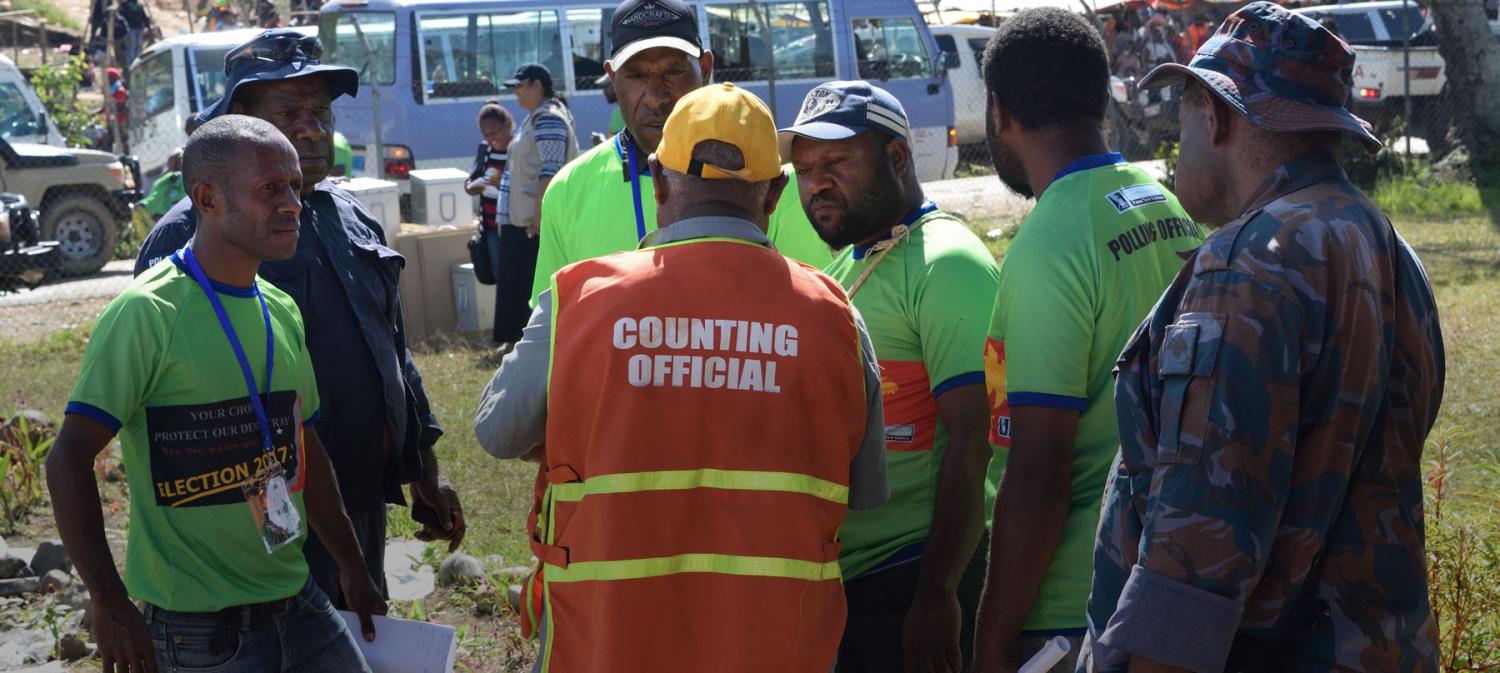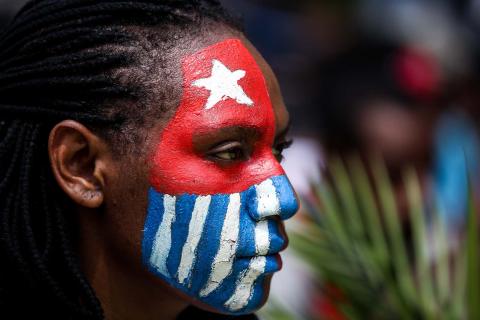This is the third of several articles for The Interpreter by the Lowy Institute’s Non-Resident Fellow and former long-time Papua New Guinea correspondent, Sean Dorney who was in PNG for the elections as part of the Commonwealth’s PNG Election Observer Mission. You can find Part One here, and Part Two here.
The count in the final undeclared seat in Papua New Guinea’s 2017 national elections has resumed – more than five weeks after polling was supposed to end and two weeks after the new Parliament elected a Prime Minister.
The seat is in the Southern Highland Provincial electorate and the eventual winner will become the Southern Highlands Governor and the 111th Member of PNG’s Parliament.
Local fighting initially caused the counting to be moved from the Southern Highlands capital of Mendi to the Western Highlands capital, Mount Hagen. Further delays arose when police in Mount Hagen refused to provide security.
The court was then told the counting would be held at the Kiminga Police Barracks but the police there were busy organising funeral arrangements for two officers killed in post-election warfare in the Engan capital of Wabag. Following this, there was a proposal to shift the count to the capital of a third province, Goroka in the Eastern Highlands, but Justice Colin Makail ordered that it be finalised in Mount Hagen because of the cost and distance involved.
The worst post-election violence, however, has come from a different seat in the Highlands, Kandep in the Enga Province, where the outgoing Opposition Leader, Dom Pomb Polye - leader of the Triumph Heritage Empowerment (THE) Party - was beaten by Luke Manase, a candidate from Peter O’Neill’s People’s National Congress (PNC).
The Enga Police Commander, George Kakas, told Radio Australia’s Pacific Beat program he feared the death toll could have reached 22. Kakas said his officers were attempting to speak with Polye’s and Manase’s tribesmen who were engaged in ongoing fighting using what appeared to be military assault weapons.
Meanwhile, O’Neill has announced his Cabinet and exactly half of the 32 Ministers - 16 - stood as Members of his PNC party. And that is more than half of the 29 PNC MPs elected. William Duma’s United Resources Party (URP) has four Ministers and Sir Julius Chan’s Peoples Progress Party (PPP) has three, although Chan himself will remain as New Ireland Governor. Three Ministers in the new Cabinet were elected as Independents and the remaining six stood for five different parties. O’Neill is very much in charge with the Deputy Prime Minister Charles Abel also from the PNC.
The Papua New Guinea Electoral Commission provided a very useful online 'Progress of Counting' site that enabled people to follow the progressive results. Unfortunately, the last posting to the site was on 31 July when the PNGEC had been able to post final figures for only 85 seats out of the 111.
I have managed to obtain further detail from a number of PNG media outlets but my figures are far from complete, especially for some of the Highlands Provincial seats, and for the four seats in the Fly River or Western Province. However, there are some intriguing results in relation to the number of ballot papers counted in the Open electorates.
According to the PNG 2011 Census, 39% of the population lived in the Highlands region, 26% in Momase (the Morobe/Madang/East & West Sepik provinces), 20% in Papua and 15% in the New Guinea Islands.
If you combine the votes for all the Open electorates in the Highlands, then the figures start to look a little odd. Some 55% of the total votes counted were cast in the Highlands (where the last census had 39% of the population); 21% were cast in Momase (census - 26%); 16% in Papua (20%); and 8% in the Islands (15%).
In the 2011 Census, Morobe was the largest province with about 675,000 people. The Eastern Highlands and Southern Highlands were the next two largest with 579,000 and 510,000 people respectively. However, while about 300,000 votes were recorded in the Open electorates in Morobe in these elections, almost the same number was recorded in the Eastern Highlands and 395,000 were recorded in the Southern Highlands.
But the most spectacular discrepancy was in the Enga Province where more than 340,000 votes were counted. The 2011 Census had Enga’s population at 432,000 - only two-thirds the size of Morobe - yet 40,000 more Engans than Morobeans allegedly voted.
There were also strange figures from the two provinces in New Britain in the New Guinea Islands. The relative populations in 2011: 328,000 in East New Britain, considerably more than the 264,000 in West New Britain. But in these elections, just over 100,000 votes were counted in the two Open seats in West New Britain (66,000 in Talasea alone), compared with 89,000 in the four Open seats in East New Britain. I simply do not believe this was because of a lack of enthusiasm for voting in Rabaul and the other parts of East New Britain. If anything, it is probably a result of a stricter adherence to the rules by the polling teams in a province that was at the forefront of PNG’s agitation for independence in the late 1960s.
These apparent discrepancies, along with the sorry state of the electoral roll, mean the results of this election will continue to provoke discussion long after we get the result for that final seat.


